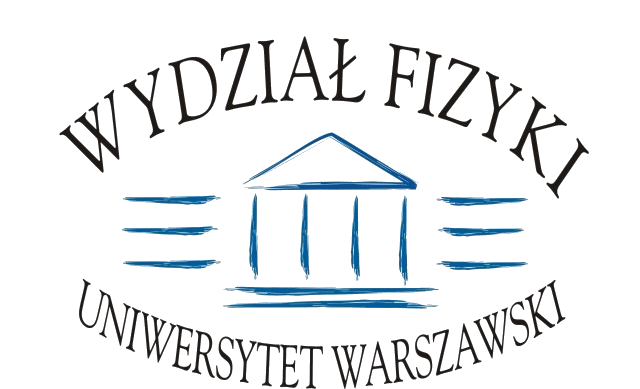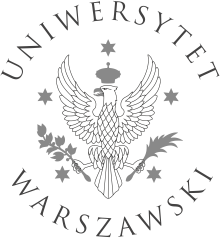Środowiskowe Seminarium z Informacji i Technologii Kwantowych
2012/2013 | 2013/2014 | 2014/2015 | 2015/2016 | 2016/2017 | 2017/2018 | 2018/2019 | 2019/2020 | 2020/2021 | 2021/2022 | 2022/2023 | 2023/2024 | 2024/2025 | 2025/2026 | kanał YouTube
do roku 2023/2024 Seminarium Kwantowa Informacja | kanał YouTube
2025-07-28 (Poniedziałek)
Filip Rozpędek (University of Massachusetts)
Generalized quantum repeater graph states
All-photonic quantum repeaters offer a promising avenue for establishing long-range quantum entanglement. Within repeater nodes, reliably performing entanglement swapping is a key component of scalable quantum communication. To tackle the challenge of probabilistic Bell state measurement in linear optics, which often leads to information loss, various approaches have been proposed to ensure the loss tolerance of distributing a single ebit. In the first part of the talk, I will introduce our generalization of the repeater graph states with elaborate connectivity, which enables efficient establishment of exploitable ebits at a finite rate with high probability. In the second part I will discuss efficient strategies of generating such generalized repeater graph states using single photon sources and linear optics. I will show how using the tools from graph theory as well as simulated annealing we can reduce the number of required photon sources by nearly two orders of magnitude relative to existing strategies. These findings offer new insights into the scalability and reliability of loss-tolerant quantum networks. The talk is based on Phys. Rev. Lett. 134, 190801 (2025) and arXiv:2506.00292 (2025).
2025-06-12 (Czwartek)
Simon Neves (Université Marie et Louis Pasteur, Besançon, France)
Experimental Quantum Network Protocols beyond Quantum Key Distribution
Recent advances in quantum technologies are paving the way for unprecedented levels of security in communication networks, grounded in the laws of quantum mechanics. At the forefront of these developments is quantum key distribution (QKD), a protocol enabling secure private communication, and has already demonstrated key exchanges over hundreds of kilometers using photonic entanglement. The scope of quantum communications now extends far beyond secure key exchange, with new protocols emerging to address a wide array of cryptographic and networking tasks. In this talk, we will focus on two such protocols and their first experimental realizations in the laboratory: quantum weak coin-flipping [1] and the secure transmission of quantum information through an untrusted channel [2]. Both protocols leverage photonic entanglement to enforce security and enable functionalities considered out of reach with classical resources alone. We will present the experimental demonstrations of the building blocks of future quantum networks, and explore key features enabled by entanglement verification, including cheat-sensitivity and device-independence.
[1] S. Neves, et al. "Experimental cheat-sensitive quantum weak coin flipping." Nature Communications 14.1 (2023): 1855.
[2] S. Neves, et al. "Experimentally Certified Transmission of a Quantum Message through an Untrusted and Lossy Quantum Channel via Bell's Theorem." Phys. Rev. X Quantum (2025, in production)
[1] S. Neves, et al. "Experimental cheat-sensitive quantum weak coin flipping." Nature Communications 14.1 (2023): 1855.
[2] S. Neves, et al. "Experimentally Certified Transmission of a Quantum Message through an Untrusted and Lossy Quantum Channel via Bell's Theorem." Phys. Rev. X Quantum (2025, in production)
2025-06-05 (Czwartek)
Lewis Clark (A*STAR, Singapore)
Trajectory methods and applications in continuously monitored open quantum systems
2025-05-29 (Czwartek)
Przemysław Dykowski (Institute of Geodesy and Cartography)
Can quantum sensors improve the way we measure Earth’s gravity?
Modern absolute gravity measurements are capable to achieve accuracies at the level of 10-9 g since late 1980s. The instruments most commonly used for gravity measurements operate on mechanical components, i.e. spring tensions or a prism free falling in a vacuum. This creates particular disadvantages in their robustness which potentially can be mitigated with emerging quantum sensors.
In the last two decades quantum sensors are being used for practical gravity measurements and since the last decade a commercial quantum sensor became available commercially to the scientific community, based on atom interferometry, the Absolute Quantum Gravimeter (AQG) manufactured by a French company, Exail. With its compact size, it is a very promising tool for measurements of Earth gravity field. Up to now 19 instruments have been manufactured and distributed worldwide.
Seminar will present aspects of Earth gravity field variations, effects that are taken into account in modern precise gravity measurements, currently available and used instrumentation along with requirements they need to meet as well as the pros and cons of introducing the quantum sensors to the scientific community. Finally results and plans for future research for the AQG-B07 quantum gravimeter (owned by IGiK) will be presented on the national and EU level.
In the last two decades quantum sensors are being used for practical gravity measurements and since the last decade a commercial quantum sensor became available commercially to the scientific community, based on atom interferometry, the Absolute Quantum Gravimeter (AQG) manufactured by a French company, Exail. With its compact size, it is a very promising tool for measurements of Earth gravity field. Up to now 19 instruments have been manufactured and distributed worldwide.
Seminar will present aspects of Earth gravity field variations, effects that are taken into account in modern precise gravity measurements, currently available and used instrumentation along with requirements they need to meet as well as the pros and cons of introducing the quantum sensors to the scientific community. Finally results and plans for future research for the AQG-B07 quantum gravimeter (owned by IGiK) will be presented on the national and EU level.
2025-05-22 (Czwartek)
Michał Matuszewski (CFT PAN)
Quantization of polaritons in confined structures
2025-05-15 (Czwartek)
Alvaro Alhambra (CSIC Madrid)
Modelling quantum thermalization with quantum computers
In quantum computing and simulation, one of our main goals is to efficiently mimic natural physical phenomena in a controlled manner. The process of thermalization is one such crucial task, for which recently there has been relevant progress. In this talk, we will showcase important parts of this progress by introducing a recent dissipative evolution that models thermalization in the many-body setting, and that is efficiently implementable in a quantum computer. We then prove the following facts about this dissipative evolution:
1) It faithfully reproduces the dissipation induced by weak coupling to a bath.2) In the high temperature regime, it very quickly approaches equilibrium.3) In the low temperature regime, it can reproduce arbitrary quantum computations.
Taken together, our results show that quantum dissipative evolutions have the potential to mirror the success of classical Monte Carlo methods.
1) It faithfully reproduces the dissipation induced by weak coupling to a bath.2) In the high temperature regime, it very quickly approaches equilibrium.3) In the low temperature regime, it can reproduce arbitrary quantum computations.
Taken together, our results show that quantum dissipative evolutions have the potential to mirror the success of classical Monte Carlo methods.
2025-04-24 (Czwartek)
Robert Keil (University of Innsbruck, Austria)
Multi-particle interference and photonic quantum interfaces
When two indistinguishable photons impinge on a beam splitter, the particles leave the device together in the same output due to the underlying two-photon interference [1]. This well-known Hong-Ou-Mandel effect is at the basis of photonic quantum information processing and various other applications. For more than two particles, the dynamics gets increasingly complex and a rich variety of interference phenomena can arise. In this talk, I will present our latest experimental results on four-photon interference obtained from spontaneous parametric down-conversion (SPDC). In particular, I will demonstrate how symmetries can affect the ability of interference [2] and how entanglement can lead to a collective four-particle interference, which is completely invisible when smaller subsets of particles are detected [3]. I will also highlight how semiconductor quantum dots can be used as a multi-photon source via active temporal-to-spatial mode demultiplexing [4]. Finally, I will introduce our new project on establishing an interface between SPDC and quantum-dot emitted photons enabled by active spectral-temporal shaping of the photon wavepackets.
[1] Hong, Ou, Mandel, Phys. Rev. Lett. 59, 2044 (1987),
[2] Münzberg et al., PRX Quantum 2, 020326 (2021),
[3] Faleo et al., Sci. Adv. 10, eadp9030 (2024),
[4] Münzberg et al., APL Photonics 7, 070802 (2022)
[1] Hong, Ou, Mandel, Phys. Rev. Lett. 59, 2044 (1987),
[2] Münzberg et al., PRX Quantum 2, 020326 (2021),
[3] Faleo et al., Sci. Adv. 10, eadp9030 (2024),
[4] Münzberg et al., APL Photonics 7, 070802 (2022)
2025-04-10 (Czwartek)
Marek Szczepańczyk (IFT UW)
The quest to detect (exceptional) gravitational-wave sources
Gravitational Wave Astrophysics has already demonstrated its potential to explore the Universe, but we are still at the beginning of this journey. While we regularly observe gravitational waves from compact binaries, we do not know what we may discover next. In my talk, I will give an overview of the field of Gravitational Wave Astrophysics by discussing the gravitational-wave detectors (current status and the future), the sources (standard and exceptional), and the role of model-independent searches in the exploration of the Universe. I will announce an upcoming LIGO-Virgo-KAGRA Symposium in Warsaw on core-collapse supernovae - one of the most interesting sources of gravitational waves. Finally, I will explore interesting venues for the field of gravitational waves.
2025-04-03 (Czwartek)
Piotr Dulian (IFT UW)
QMetro++ - Python package for large scale quantum metrology
2025-03-27 (Czwartek)
Karolina Słowik (UMK Toruń)
On the role of entanglement in two-photon absorption
Optimal excitation of a three-level ladder-type atom by a two-photon light state is analyzed using the Wigner-Weisskopf approximation. The optimal state, enabling perfect excitation with unit probability, is determined by the lifetimes of atomic states, with its entanglement dependent on their ratio. Two distinct interaction regimes are identified, in which entanglement affects the excitation process differently.
The optimal light state is an entangled photon pair. As such states may be challenging to prepare, comparisons are made with experimentally accessible photon pair profiles, whose parameters are optimized to maximize excitation probability. The influence of entanglement on atom excitation and its dependence on atomic properties are discussed.
The optimal light state is an entangled photon pair. As such states may be challenging to prepare, comparisons are made with experimentally accessible photon pair profiles, whose parameters are optimized to maximize excitation probability. The influence of entanglement on atom excitation and its dependence on atomic properties are discussed.
Stron 1 z 3






